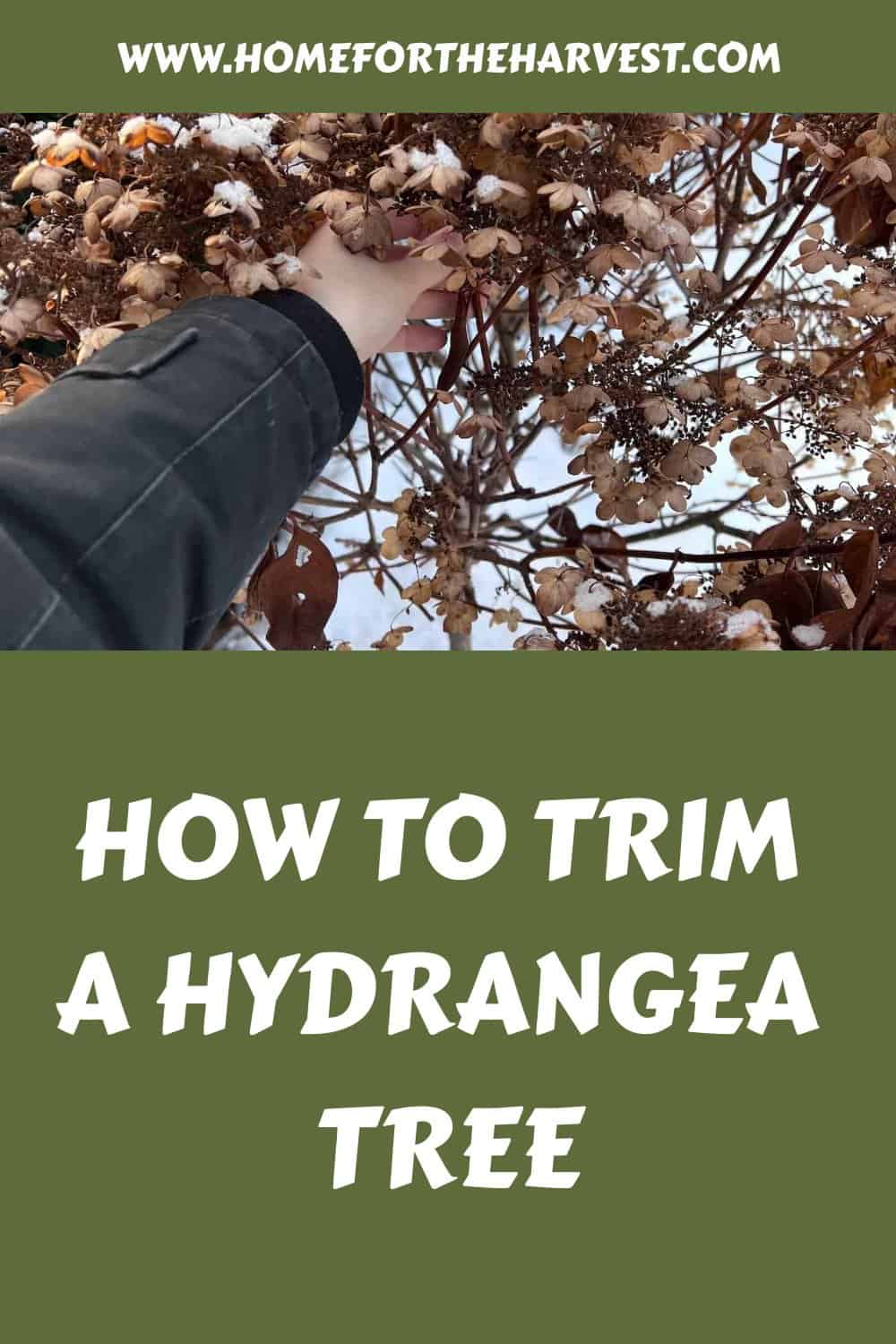Most hydrangea trees are created using the species Hydrangea paniculata. Year-round pruning includes general maintenance like removing dead, damaged, or diseased branches. Deadheading by snipping off spent flower heads in the fall can minimize winter damage in snowy or windy climates.
Annual pruning for most types is typically done in early spring. This is the time to remove any branches that are crossing, growing inwards, or otherwise crowding the canopy. Then cut the whole canopy sphere back by about one-third of its pre-pruning size.
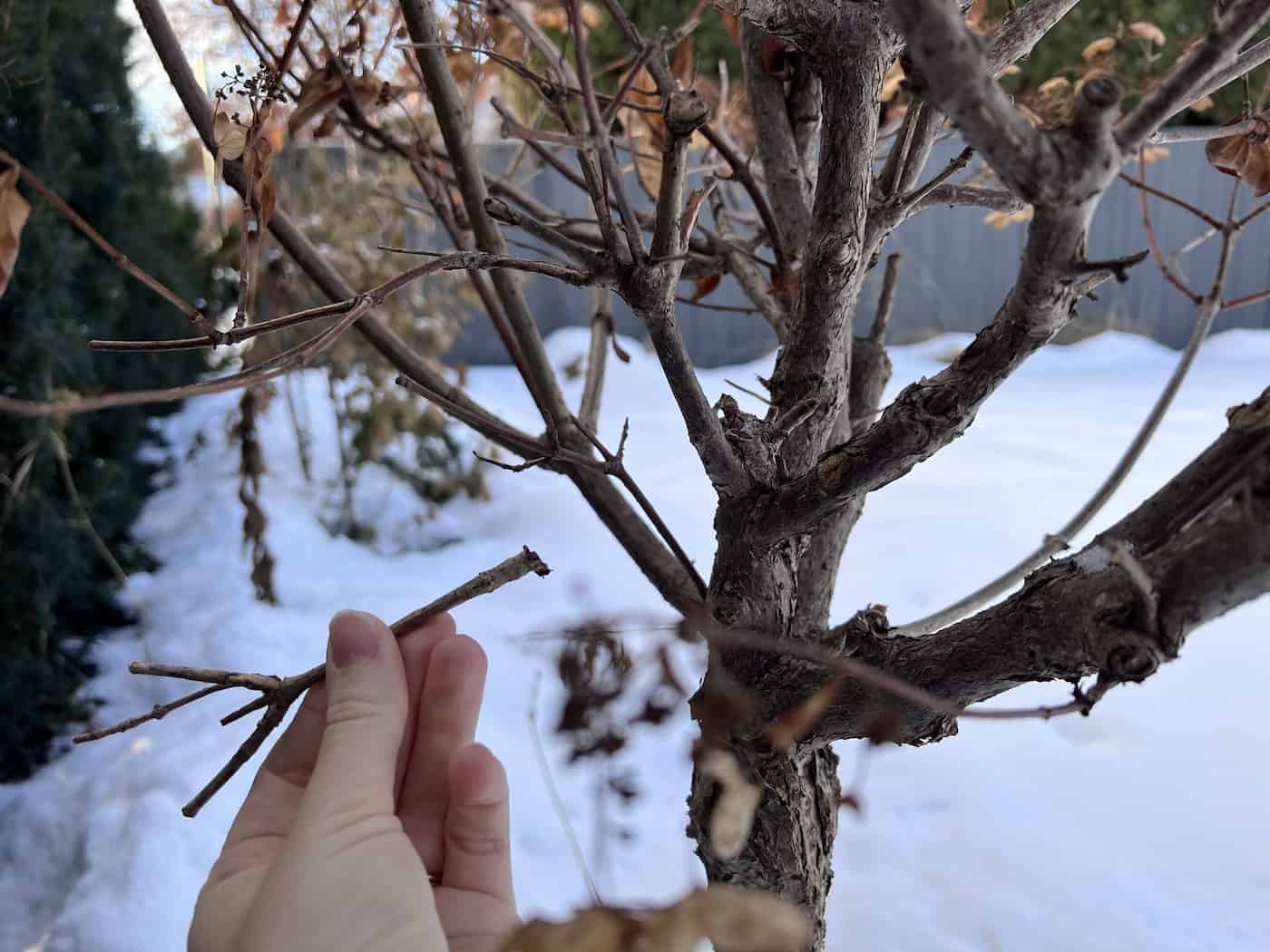
Introduction to pruning hydrangea trees
Pruning hydrangea trees is a necessary step for keeping them healthy and blooming. It’s essential to prune at the right time in order to get the best results from your trimming efforts. For most species, pruning should be done when the tree is dormant, which usually occurs between late fall and early spring, depending on where you live.
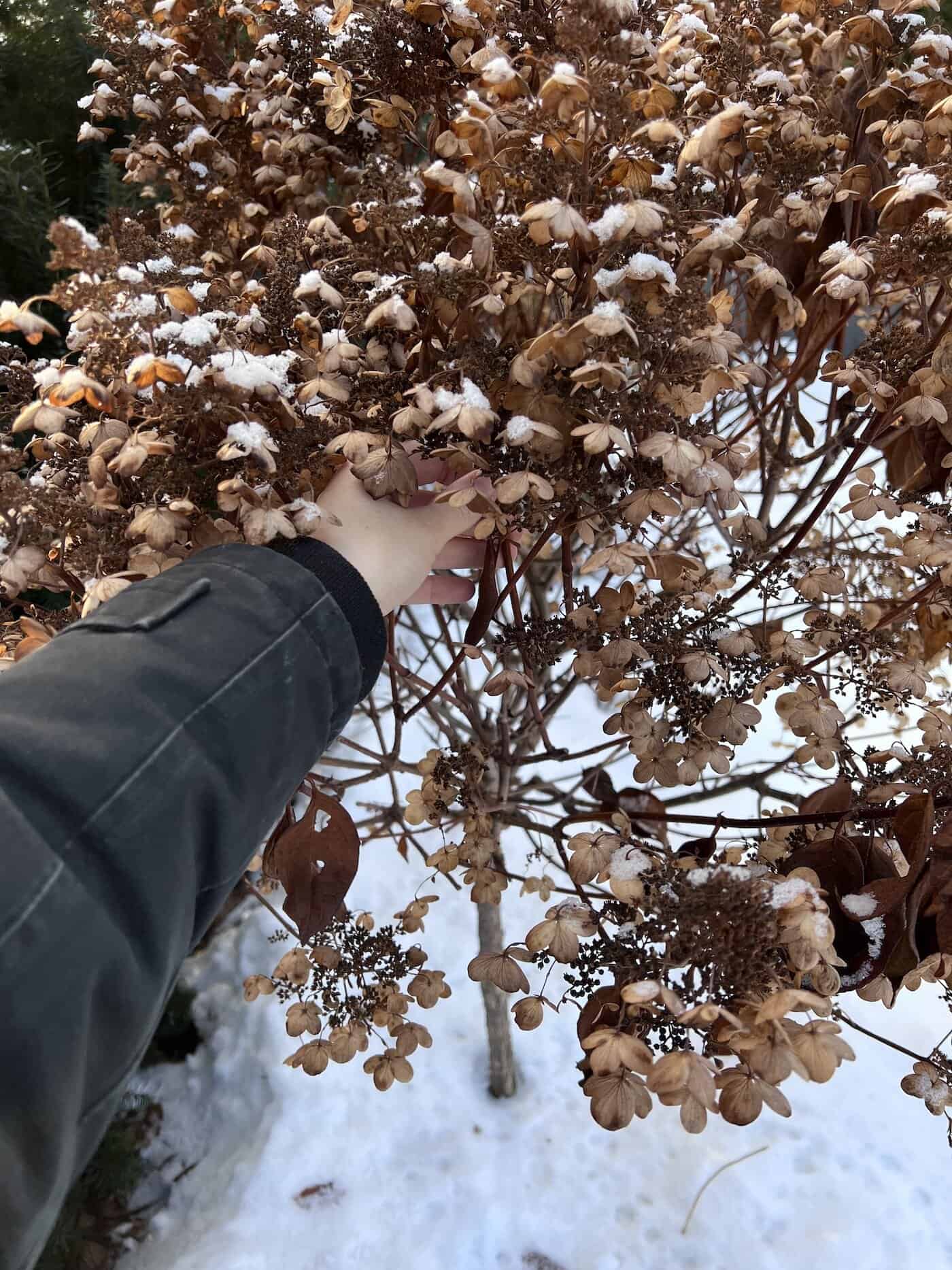
When to trim a hydrangea tree
Timing when to trim a hydrangea trained in tree form depends on which species you are growing. Most hydrangea trees are created with Hydrangea paniculata species plants and should be trimmed in late winter or early spring.
Here are the most common species of hydrangeas and when to prune the plants:
- Panicle hydrangeas (Hydrangea paniculata): Late winter/early spring, before spring growth
- Smooth hydrangeas (Hydrangea arborescens): Late winter/early spring, before spring growth
- Mophead hydrangeas (Hydrangea macrophylla): Summer, right after flowering
- Mountain hydrangeas (Hydrangea serrata): Summer, right after flowering
- Oakleaf hydrangeas (Hydrangea quercifolia): Summer, right after flowering
- Climbing hydrangeas (Hydrangea anomala subsp. petiolaris): Summer, right after flowering
Most hydrangea trees are panicle-type hydrangeas (Hydrangea paniculata). Here are some of the most common cultivars used to make tree-form specimens:
- Limelight hydrangea (Hydrangea paniculata ‘Limelight’)
- Quick Fire hydrangea (Hydrangea paniculata ‘Bulk’)
- Vanilla Strawberry hydrangea (Hydrangea paniculata ‘Renhy’)
- PeeGee hydrangea (Hydrangea paniculata ‘Grandiflora’)
In general, hydrangea species that flower on fresh new growth are pruned in early spring. The plant responds to the early season pruning by sending out lots of new vigorous growth capable of producing flowers.
In contrast, species that flower on old growth that has been through a winter season should not be pruned until right after they flower in the summertime. These species set their flower buds in the late summer, and the dormant buds stay on the plant through winter until they bloom the following growing season.
“Just about any bushy plant can be trained as a standard. Upright, vigorous varieties, when they exist, are easiest to train this way.”
The Pruning Book, by Lee Reich
Tools for pruning hydrangeas in tree form
When you are ready to begin the pruning process, here is a list of the tools you will likely need:
- Gardening gloves: to protect your hands from sharp branches and thorns.
- Pruning shears: to trim in small spaces, as well as shorten long branches.
- Loppers: to trim out medium-diameter branches.
- Pruning saw: to trim larger branches that are too thick to cut with hand shears or loppers.
Remember to use sharp tools for the best and safest results when pruning hydrangea trees. It’s also prudent to sterilize your pruning tools (I use Lysol liquid disinfectant multi-surface cleaner).
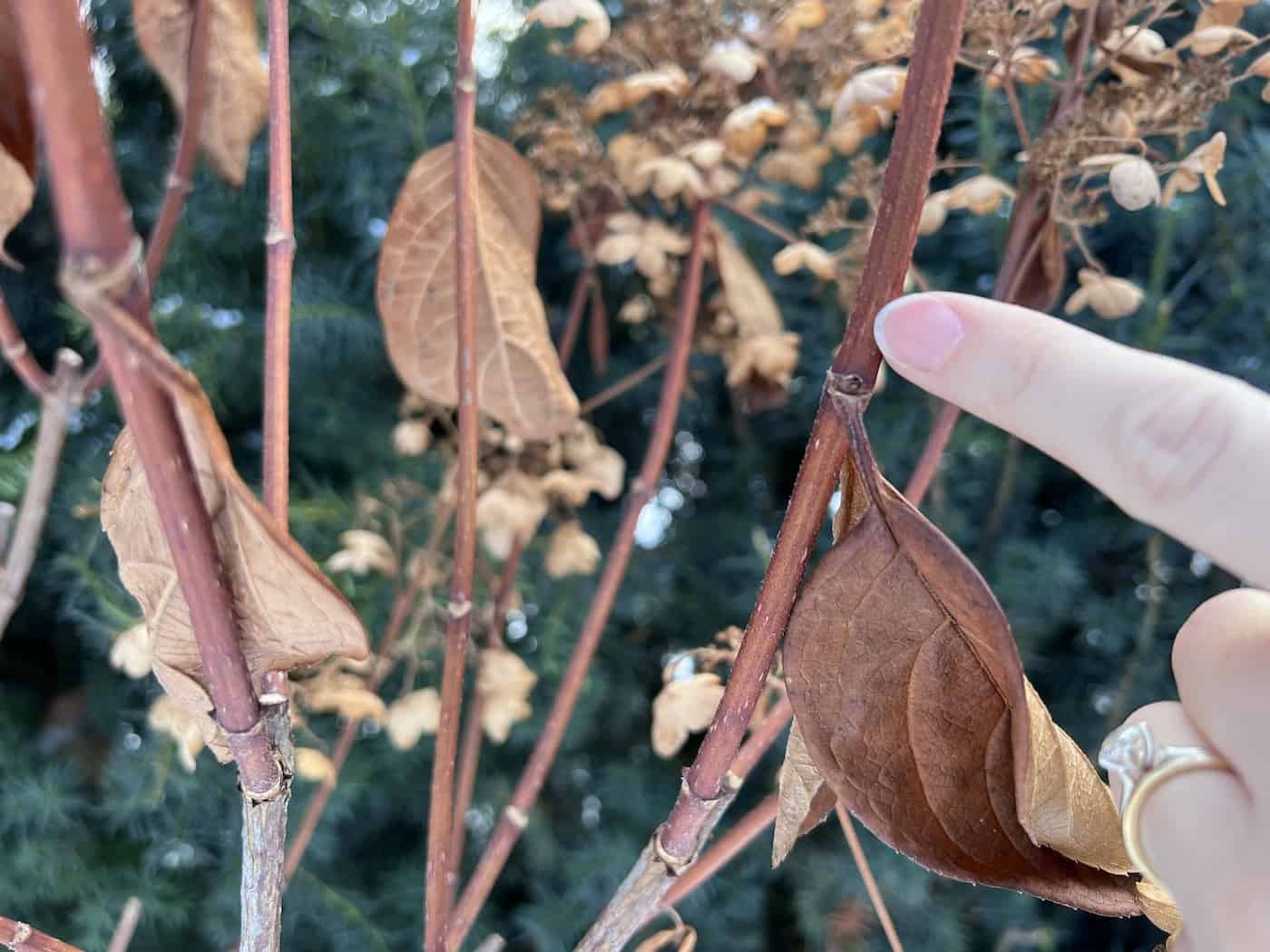
Steps to trim a hydrangea tree
Once you have the right tools and know when to prune hydrangeas, it’s time to get started! Here is an overview of the steps involved in properly trimming a standard hydrangea:
- Start by removing any dead, diseased, or damaged branches. Take dead branches out completely (entire branch). It’s usually easiest to completely remove the damaged and diseased ones as well. If you didn’t deadhead the plant in the fall, now is the time to snip off each overwintered flower head. It’s easiest to prune a hydrangea’s frame with all the flowers off it.
- Remove any shoots growing from the base of the trunk or at ground level. The hydrangea tree is a “standard” topiary and should have only one central stem/trunk.
- Next, thin out any overcrowded sections by removing branches that cross each other or are growing inwards towards the center of the tree’s canopy. Take these crossing stems and weak branches back to the main branch rather than leaving half-long stubs.
- Step back and look at the plant’s shape overall now that the weak branches are gone. In particular, look for any overly long branches, sagging weak stems, or anything else protruding from the rounded shape of the canopy.
- Then, cut back the whole plant by one-third of its pre-pruning size. On each branch being shortened, trim the stem back to just above a pair of buds.
- Step back and look at the plant’s trimmed overall shape.
- Make any last adjustments. When you prune a hydrangea that’s been trained into a tree shape, all your pruning cuts should work together to create a spherical ball on top of the main trunk.
- Lastly, clean up any remaining twigs and small branches.
An alternative method of trimming hydrangeas is called pollarding. This type of pruning is a specialty technique that involves removing all of the branches from the main stem leaving only a pollard head. Pollarding can also be done in late winter/early spring before new growth begins. However, because the technique involves severely cutting back the tree, it is usually only practiced by experienced gardeners.
How the timing of pruning a hydrangea affects the plant
The timing of pruning affects the flowering of a hydrangea tree. A tree that is given a light pruning in late winter typically responds with vigorous growth in the springtime, followed by large, early flowers. A hydrangea tree given a significant trim later in the spring is more likely to have less vigorous growth and smaller, later flowers.
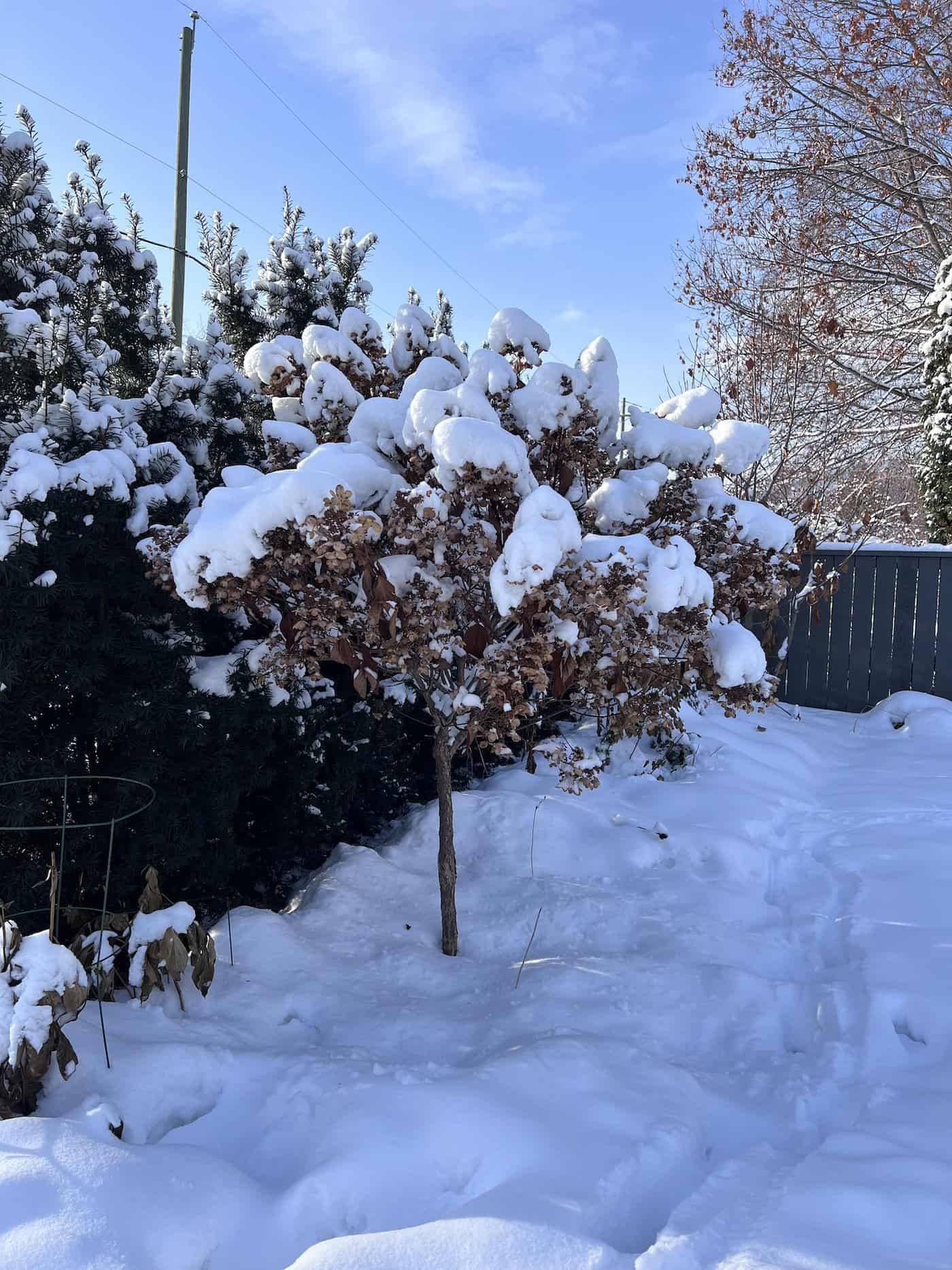
FAQs about pruning tree-form hydrangeas
What happens if you don’t prune a hydrangea tree?
If you do not prune your hydrangea tree, it will continue to grow in size, and the canopy can become overgrown. While most shrub-form hydrangeas are just fine without much pruning, standard forms should be pruned every year, so they don’t become too top-heavy for the stem (especially in windy or snowy climates). If left unpruned for several years, a hydrangea tree might eventually need to be cut back hard in order to restore its shape.
Can you prune hydrangea trees in late summer?
You can certainly prune hydrangea trees in late summer, but this is not the best time for significant pruning. If you like to deadhead the plant, you can certainly do so. You can also completely remove any branches that are dead, damaged, or diseased (do this ASAP, any time of year). Lastly, you can do light pruning to keep the overall shape looking good.
But, for major pruning of most species, it’s best to wait until late winter or early spring when the tree is still dormant. This gives the branches plenty of time to recover before new growth begins in the spring.
Can I cut back hydrangea trees all the way to the ground?
Never cut a hydrangea tree all the way back to the ground. If you cut your hydrangea all the way back, it will have to sprout anew from the roots. it is unlikely you will get any flowers that year. You’ll also have to train it back to a standard by trimming all the extra stems and helping support the main central stem as it grows.
Instead of cutting all the way back, trim each branch of the canopy down by about one-third of its length. This will keep the tree looking tidy without sacrificing future growth.
Can I trim hydrangea trees in the fall?
Yes, you can do a light trimming of your hydrangea tree in the fall if needed. However, this should be done well before temperatures start to drop below freezing. You can also deadhead the plant in the fall but leave any significant pruning for late winter/early spring when the tree is still dormant. This will give the branches plenty of time to recover before new growth begins in the spring.


